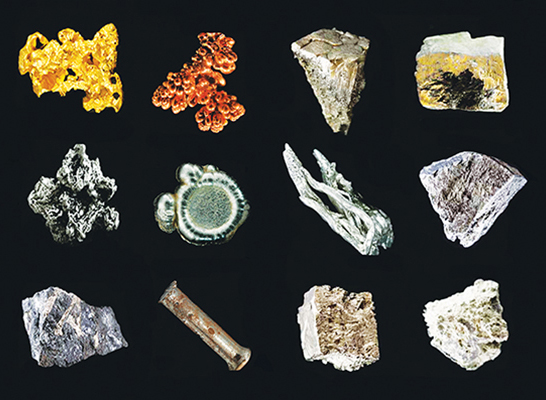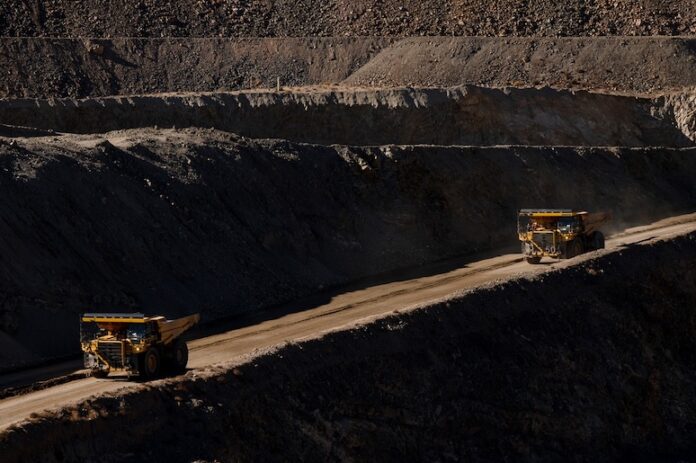Rare Earth Elements Power the Modern World
Rare earth elements drive the production of modern electronics, energy systems, and advanced weaponry. The 17 elements—scandium, yttrium, and the 15 lanthanides—support everything from smartphones to missile systems. Each element serves a distinct role across consumer, industrial, and defense sectors.
List of the 17 Rare Earth Elements and Their Applications

| Element | Primary Use Categories | Key Applications |
|---|---|---|
| Lanthanum (La) | Consumer, Industrial | Camera lenses, hybrid batteries, glass polishing |
| Cerium (Ce) | Consumer, Industrial | Catalytic converters, glass polishing, self-cleaning ovens |
| Praseodymium (Pr) | Consumer, Industrial, Defense | Aircraft engines, magnets, fiber optics |
| Neodymium (Nd) | Consumer, Defense | EV motors, headphones, wind turbines, missile systems |
| Promethium (Pm) | Defense, Scientific | Nuclear batteries (limited military/scientific use) |
| Samarium (Sm) | Defense, Industrial | Guided missile components, magnets in radar and sonar |
| Europium (Eu) | Consumer | Fluorescent lighting, screens, banknote anti-counterfeiting |
| Gadolinium (Gd) | Medical, Industrial | MRI contrast agents, neutron shielding in nuclear reactors |
| Terbium (Tb) | Consumer, Defense | Green phosphors in TVs, magnetostrictive alloys (sonar) |
| Dysprosium (Dy) | Defense, Industrial | High-temp magnets in EVs, missile guidance, lasers |
| Holmium (Ho) | Industrial | Nuclear control rods, high-strength magnets |
| Erbium (Er) | Consumer, Industrial | Fiber optic amplifiers, lasers, metallurgy |
| Thulium (Tm) | Medical, Industrial | Portable X-ray machines, lasers |
| Ytterbium (Yb) | Industrial | Stress gauges in buildings and bridges, laser crystals |
| Lutetium (Lu) | Medical, Industrial | PET scan detectors, refining catalysts |
| Scandium (Sc) | Industrial, Defense | Lightweight aerospace alloys, solid oxide fuel cells |
| Yttrium (Y) | Consumer, Medical, Defense | LEDs, superconductors, radar, cancer treatment agents |
Consumer markets rely on rare earths for smartphones, televisions, laptops, tablets, and rechargeable batteries. Industrial sectors use them for wind turbines, solar panels, fiber optics, and MRI machines. Defense systems integrate rare earths into fighter jets, radar, precision weapons, and satellite systems.
These elements exist across many regions. Mining and processing them, though, require heavy investment, specialized equipment, and often create environmental hazards. This production challenge makes China’s supply network dominant and hard to replace.
Consumer markets rely on rare earths for smartphones, televisions, laptops, tablets, and rechargeable batteries. Industrial sectors use them for wind turbines, solar panels, fiber optics, and MRI machines. Defense systems integrate rare earths into fighter jets, radar, precision weapons, and satellite systems.
These elements exist across many regions. Mining and processing them, though, require heavy investment, specialized equipment, and often create environmental hazards. This production challenge makes China’s supply network dominant and hard to replace.
China’s Rare Earth Control and the 2010 Wake-Up Call
In 2010, a collision between a Chinese fishing boat and a Japanese coast guard vessel near disputed islands sparked more than diplomatic tension. China responded by halting rare earth exports to Japan. That single move exposed the global dependency on a single country.
Prices spiked. Manufacturers scrambled. Governments took notice. China controlled over 95 percent of the global rare earth supply. The Japanese government, despite having evidence of Chinese aggression, hesitated to release video footage from the incident. One Japanese coast guard officer later leaked it, frustrated by the silence.
China’s action had real consequences. “China suddenly slashed its exports by 72 percent,” journalist Matt Bevan explained in a 2024 segment. “That sent prices soaring.”
The incident pushed countries to seek supply alternatives. The United States and Australia began working on domestic sources to cut reliance on China’s monopoly.
Australia and the United States Build a Rare Earth Backup
Lynas Corporation in Australia began building mining and processing facilities in Western Australia and Malaysia. Their work received support from the Australian government and the U.S. Department of Defense. These investments aimed to secure long-term supply chains beyond China’s influence.
Australia did more than dig. It built environmentally regulated processing infrastructure. In Texas, the United States restarted operations at an old mine in California and began rare earth recycling programs. Though not yet running at full speed, these facilities can scale if required.
“Former Australian Prime Minister Kevin Rudd has been on the case since 2010,” said Bevan. “Australia stands ready to be a long-term, secure, reliable supplier of rare earths to the Japanese economy.”
Together, Australia and the United States created a credible foundation for rare earth independence. This network now covers supply, processing, and refining—all outside China.
Trump Ties Ukraine Aid to Rare Earth Claims
Donald Trump made rare earth minerals a political bargaining chip. During his campaign, he claimed that Ukraine sits atop trillions in rare earth value. He suggested that U.S. aid should link directly to access to these minerals.
Senator Lindsey Graham echoed that message on Fox News. He said Ukraine contains “2 to 7 trillion worth of minerals,” though months earlier he claimed the number stood between 10 and 12 trillion. He called them the richest resources in Europe.
Trump later told Fox News that Ukraine had agreed to a deal. “I told them that I want the equivalent like 500 billion dollars worth of rare earth, and they’ve essentially agreed to do that,” he said.
Ukrainian President Volodymyr Zelensky met with Trump and appeared to accept this framing. He stated he wanted “to discuss with you the details of our plan of victory,” linking military success to resource-based repayment.
Geology Does Not Support Trump’s Proposal
Geological data contradicts Trump’s assumptions. Ukraine has no confirmed large-scale rare earth deposits. No geological survey places Ukraine among the top sources for these elements. Romania holds minor deposits, but Ukraine does not.
The global rare earth market generates less than $5 billion per year. Trump’s demand for $500 billion equals the entire global market for a century. His estimates ignore reality. They also skip the fact that no processing or refining capacity exists in Ukraine.
Building a rare earth industry from scratch takes decades. It needs political stability, environmental review, capital investment, and supply chain development. Ukraine remains in the middle of an active war.
“There is no economically significant deposit in Ukraine,” Bevan said. “Modern surveys indicate the closest is in Romania.”
A Foreign Policy Built on False Assumptions
Trump’s proposal raises questions about decision-making at the highest levels. If the former president shaped policy based on unsupported data, the implications stretch beyond minerals. Rare earth elements may serve as a vehicle to justify cutting support for Ukraine.
The claim also offers a transactional framework—aid in exchange for minerals. That type of exchange may appeal to campaign slogans, but it ignores the limitations of wartime economies and geological constraints.
No Rare Earth Future Beneath Ukraine
Ukraine does not have the resources, the infrastructure, or the stability to deliver on Trump’s proposal. His numbers misstate the market. His strategy depends on resources that do not exist.
Foreign policy cannot succeed on fantasy. It must rest on verified data, reliable partners, and functioning infrastructure.

